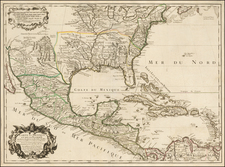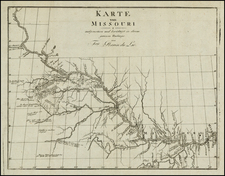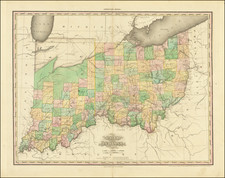One of the most attractive, detailed, and largest maps of Minnesota from the 19th century. Here in an excellent example with vibrant publisher's hand-color by county.
The map highlights the gradual settlement of the state from its epicenter in the Twin Cities. The upper third of the state and the western border with the Dakota Territory is unsurveyed and relatively unknown, being represented here in conjectural waterways and loosely rendered lakes.
Proposed and finished railroads are shown as are state, county boundaries, townships and range lines, section lines, the state capitol, county seats, villages and post pffices.
The Colton "New Sectional" maps are quite rare no matter their subject; we have handled only three others (Illinois, Kansas, and Florida). They deserve to be prized as they are among the most detailed and authoritative map series for the post-Civil War United States.
G. W. & C. B. Colton was a prominent family firm of mapmakers who were leaders in the American map trade in the nineteenth century. The business was founded by Joseph Hutchins Colton (1800-1893) who bought copyrights to existing maps and oversaw their production. By the 1850s, their output had expanded to include original maps, guidebooks, atlases, and railroad maps. Joseph was succeeded by his sons, George Woolworth (1827-1901) and Charles B. Colton (1831-1916). The firm was renamed G. W. & C. B. Colton as a result. George is thought responsible for their best-known work, the General Atlas, originally published under that title in 1857. In 1898, the brothers merged their business and the firm became Colton, Ohman, & Co., which operated until 1901, when August R. Ohman took on the business alone and dropped the Colton name.










![Partie De L'Amerique Septent? Qui comprend La Nouvelle France ou Le Canada . . . [Large Great Lakes Inset]](https://storage.googleapis.com/raremaps/img/small/48752.jpg)
![[Rare First State] Novissima Tabula Regionis Ludovicianae Gallice dictae la Louisiane . . .](https://storage.googleapis.com/raremaps/img/small/72622.jpg)


